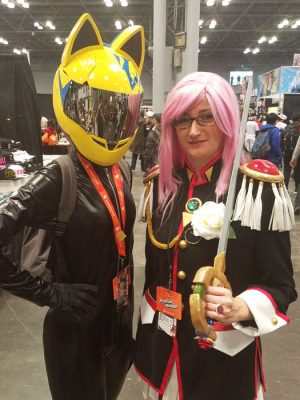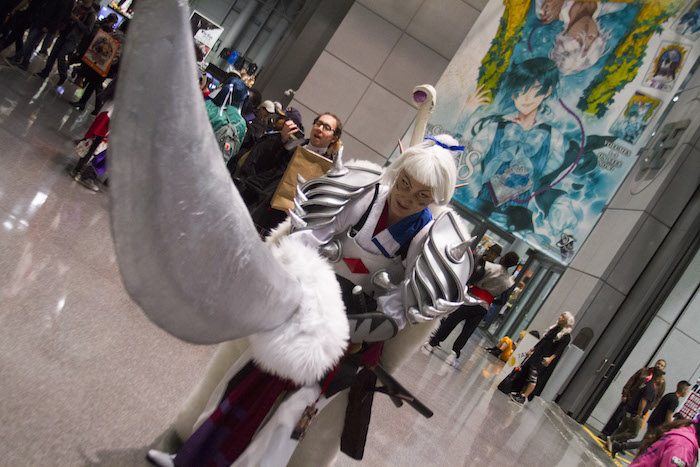
Anime characters are fantastical, and that’s why we love them. However, when it comes to emulating these characters in real-life creating dresses that bounce, extra long pointy hats, or giant hammers that move effortlessly can be a challenge. Whether you’re a new cosplayer or have years of experience, you can always learn something new - and this year a few veterans shared some tips and tricks on perfecting the physics of your latest ensemble, and getting the motion of your costumes and props just right.
Panel Overview
A trio of experienced and talented cosplayers headed this panel. Emma, Trevor, and Gretchen together are part of a group called Capes2Cowls - the three aim to help encourage and enable cosplayers to craft their own props and costumes. Emma Lispchutz’s cosplay handle is M.Mischief - she has been cosplaying for over 15 years, and has been sewing since the age of six, so she had a lot of advice and knowledge to share. She was joined by panelist Trevor Swann, another long-time cosplayer and experienced costume crafter, who also works as an actor. Gretchen Schroeder, the third panelist, says she’s been cosplaying and costuming for nearly three decades. Together the three of them shared a bit about what they’ve learned over the years about making a costume that goes the extra mile - making reality as close to fantasy as possible.
Cosplay Tips
Scaling For Cosplay - Making Sure Your Costume is Proportionate
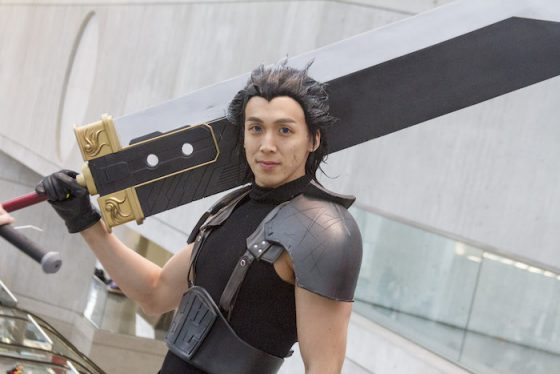
A prop can be made with the most excellent craftsmanship on the planet, but if it’s the wrong proportions or size, all that effort will be wasted. “This can be particularly difficult if you have a character that is very tall... and you’re scaling down to 5’3,” Emma pointed out. Gretchen demonstrated how using a grid in a digital imaging program (she used powerpoint) can help you get your staves and wands to be the exact size as your favorite character’s. She stressed the importance of “accuracy” as she demonstrated putting a reference picture of a character into a digital imaging program over a grid, and then importing a clear image of herself in next to it - with a yardstick, to help scale the grid.
Sewing Structure - How to Help Your Costume Defy Gravity
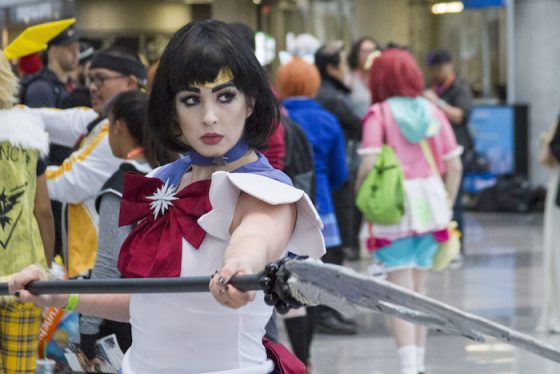
Sometimes a character’s clothing may float - something that garments don’t do naturally in real life of course - so cosplayers have to find creative solutions. “Artists don’t like to acknowledge gravity as a thing, things just sort of float on air,” Emma explained. “This is where fabrics and understructure fabrics are really, really handy.” Getting the right texture of a fabric is one thing, but getting the movement just right is an entirely separate art. “Is it still, does it have to have to have flow? Look at Akane’s skirt, it has movement but it still maintains fullness.., but Jesse’s jacket or top from Team Rocket has that sort of box like structure that maintains no matter how much she moves.” She talked about the importance of carefully studying movement from source material, and recommended materials such as horsehair braids (good for sailor skirts and cape hems), buckram (for really still garments like witch hats), and foss shape into your garments to achieve authentic movement.
Materials To Provide Support and Volume - Billowing Dresses and Beyond

The outer parts of garments aren’t the only place movement can come from - sometimes the outer part a dress or cape may lay in a way consistent with reality - but it’s internal structure may billow or float in a manner inconsistent with real-world physics. “Things like petticoats, under coats, these are the things you want to make that with,” Emma said. “Think of netting as an ability to stuff something - you can move with it and it still maintain shape.” For this, the panel recommended trying out different types of nettings, tulles, and mesh “Sometimes we tend to think of netting typically in petticoats or skirts - any place that you need fullness you can add various kinds of nettings and build them into your seam,” Gretchen said.
Cosplay Props - Convention Comfort Considerations
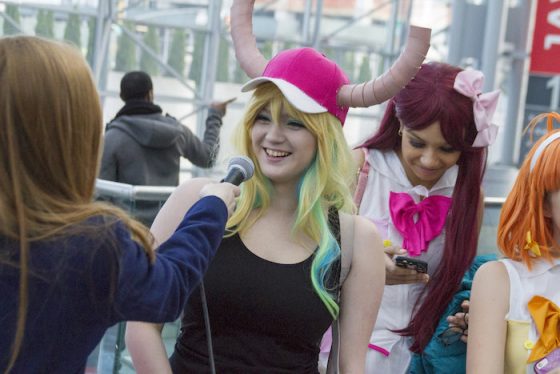
Some characters wield weapons that are bigger than they are! When emulating these characters in costume, there’s a lot to be taken into consideration during the process of making them. “When making props you have to take into consideration the rules and regulations of different conventions,” Trevor explained, adding that many conventions won’t let props over a certain size in. “You have to keep in mind what kind of size you want to deal with.” He also explained the importance of making sure you can move around - safely. “There’s nothing more fun that you having a sword over your shoulder and you turn to the right and you happen to hit three people.” Emma stressed the importance of considering prop weight - “You’re going to carry it all convention - they don’t have lockers.” Trevor recommended lightweight materials like EVA foam and PVC pipes of different sizes for crafting your props.
Pattern Making - Just Your Size, Safely
Making a pattern case of yourself can be an important part of making sure your costume
fits and moves they way you want it to - but when using tape and plastic wrap to DIY it, the panel warned against dangerous practices, some of which can be found in Youtube Tutorials. “Do not wrap your head,” Emma said. “Do not wrap your torso and plastic wrap in tape without someone else present.” Gretchen cautioned the audience about wrapping too tightly as well, “When you are doing this you are raising your body temperature, and you’re also preventing your body from being able to perspire. It’s a really effective way, but make sure someone else is with you even if you think you’re doing something relatively simple.” They also recommended wearing tight clothing underneath such as under armour avoid direct skin contact, and medical scissors as a safe method for cutting the tape off.
Final Thoughts
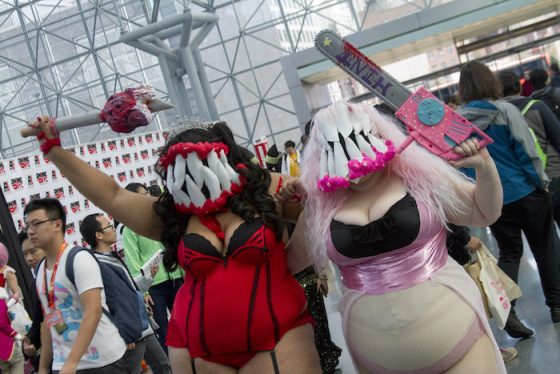
The three panelists delivered an informative presentation, presenting their slides in a way that would be accessible for cosplayers of all skill levels. They included so many tips and tricks it was impossible to fit more than a handful of them in this article! You can find more information about them, as well as more resources on their website.(http://capes2cowls.com) They have toured in the past, so if you’re interested in learning more from these three look for them at a convention near you!
Recommended Post
Differences Between Anime NYC and Comic Con 2017
Recommended Post



